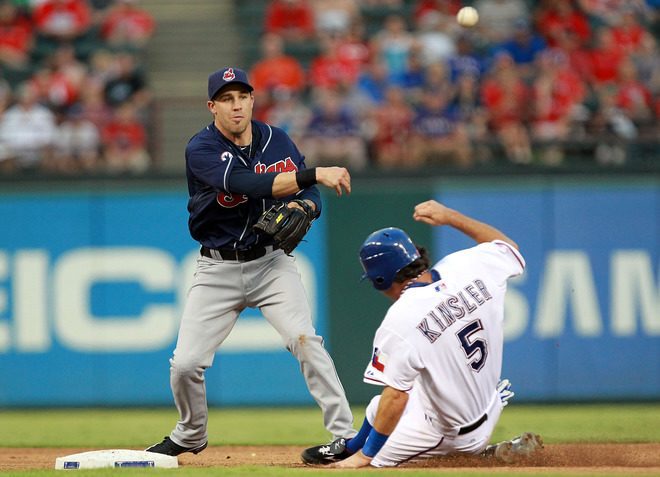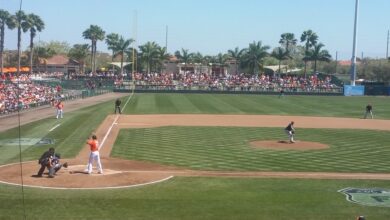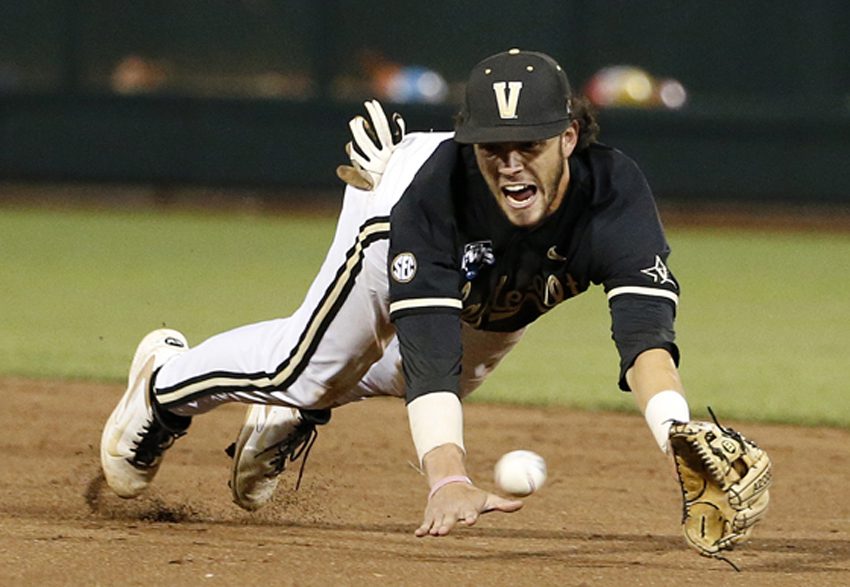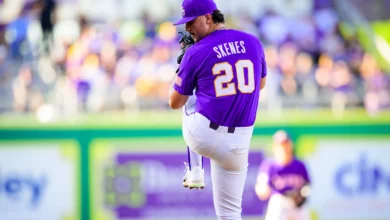
It would hardly be unique to call 2011 “the year of the rookie.” It seems that almost every season is branded with this moniker due to the baseball community’s fawning efforts to make each season impressively memorable in some way. Sure, a bevy of talented youngsters cracked big-league squads in the past several months and many have contributed in big ways to their teams’ successes. But this is hardly a one-of-a-kind occurrence.
However, there is a particular trend among the newcomers to The Show that is hard to ignore: This is the beginning of a new age of star-quality second basemen. I’d argue that the position has been dominated by the big five for several years now—that is, Pedroia, Cano, Uggla, and some mixture of Rickie Weeks, Brandon Phillips or Ian Kinsler. A huge gap separated those guys and the pedestrian remainder of the field in terms of all-around contribution. But now, in the wake of the steroid era, we’re seeing a veritable flood of young talent at the position perhaps least tainted by PED scandal (despite Bret Boone’s best efforts). In the order of the amount of hype surrounding them, here are the household name second basemen of the immediate future.

Dustin Ackley, Mariners
Seattle’s savior is already hard at work living up to his billing, as TTFB’s Jared Thatcher has noted several times. The North Carolina product is cast in the mold of another Dustin (namely, Pedroia). He is the sort of hard-nosed guy who plays the game right and has hit at every level through sheer will power. While his lefty stroke may not generate 30+ homers, he is the sort of steadfast player you build a winning franchise around—a Derek Jeter on the other side of the middle infield. Ackley has already settled into the three spot in the Mariners’ order and is flirting with .300. He will get on base and with halfway decent bats behind him, he will score runs. Many baseball people were underwhelmed and critical of Pedroia and his approach when he came up—now he’s the proud owner of Rookie of the Year and MVP trophies and a World Series ring. Careful not to make the same mistake twice, the baseball world is embracing Ackley from the get-go, with good reason.
Brett Lawrie, Blue Jays
The key to the deal that sent Shaun Marcum to Milwaukee, Lawrie (whose family does not make seasoning salt) is already looking like a good investment. After slogging through the Brewers system with a sub-.300 average and only moderate power numbers, the native Canadian responded well to the move to his homeland franchise. In 2011 he absolutely crippled triple-A pitching to the tune of a .353/.415/.661 split, with 18 homers and 13 steals in a mere 292 at bats. This prompted the call-up that many MLB experts didn’t expect until 2012. Young Lawrie not only handled the transition in stride, but has actually improved upon his already gaudy numbers, posting a .378/.440/.711 split through his first 50 major league plate appearances. Brett projects as a potential Jeff Kent type of offensive second sacker. Speaking of Kent, was he supposed to have been on ‘roids? Or was it just his moustache that enhanced performance? Thankfully, Lawrie has yet to sport a Kentian lip toupee, though his fur-trapping heritage might not rule it out as a future facial statement.
Jason Kipnis, Indians
Along with Lonnie Chisenhall, Kipnis forms the backbone of Cleveland’s Infield of the Future. But these guys were only supposed to get limited looks at the end of 2011, eased into The Bigs while the Tribe floundered in the AL Central cellar. Instead, Kipnis has provided recent spark to an Indians team in the middle of a heated playoff race, slamming six long balls in a 10-game stretch (including a four game homer streak). Unfortunately, Kipnis just landed on the DL with a hammie tweak, but rest assured he’ll be back. Cleveland won’t baby him, not this year, not with a shot at the postseason. Beyond 2011, Jason projects as a possible Uggla type—a stocky, rather strikeout-prone 2B with some pop. But just like Uggla, he’ll offset extended dry spells with ludicrous hit-binges like his recent home run onslaught.
Jemile Weeks, Athletics
Well, the brand recognition is there. And while this Weeks may not have brother Rickie’s fence-clearing muscle, he makes up for it with his superior contact hitting and his reputation as a demon on the basepaths. He’s already locked into the leadoff spot in an Oakland lineup that includes Coco Crisp. Look for him to be a 100-run scorer as soon as 2012 and a potential 30-40 steal guy if the occasionally stodgy A’s let him run. He’s already got 13 swipes in less than half of a season. He might also turn into one of the most prolific triples hitters since Lance Johnson, already boasting eight three-baggers through 255 at bats. Jemile’s game is far from complete, however. In his limited major-league time, he’s already racked up an AL-worst 11 errors at second. But there is plenty of time for the 24-year-old to improve with the glove.
Danny Espinosa, Nationals
Espinosa is quickly establishing himself as the Mark Reynolds of second basemen. He offers impressive power for the position and respectable base-stealing ability (17 HR and 12 SB to date), but offsets these skills with a paltry batting average and horrific strikeout rate (.227 and 121 K). In most fantasy leagues, his numbers play quite well, and for this reason he has garnered some buzz in “fake game” circles. Like Weeks, his on-field play still has holes in it that aren’t readily obvious to a fantasy player. He’s a bit error-prone, he’s only been successful in 38 percent of his sacrifice bunt attempts this year and nearly a quarter of his hits have been infield or bunt singles. These are mostly marks of an inexperienced player with room to improve. For now, his power and speed combo and his scrappy approach will keep him starting. A hitter can learn patience, but it’s hard to teach aggressiveness like Espinosa has, which has led both to his league-leading 16 hit-by-pitches and his 75 percent swinging strikeout rate. Right now, he’s Kelly Johnson. Soon, he may be drawing comparisons to more renowned second basemen.

Jose Altuve, Astros
When the Astros traded Hunter Pence and Michael Bourn, it opened the flood gates to a complete cleansing of any and all players that could be considered veterans. “Rebuilding,” doesn’t begin to describe the extremity of it. Hence, Houston is now sporting a mystery lineup of recent call-ups and prospects. Altuve is one of the bright spots—a potential future batting title contender cutting his teeth amid the rubble of the ‘Stros’ 2011 season. He’s been putting on a contact hitting clinic since he entered the minors at the age of 17. This year, as a wizened 21-year-old, Jose took it a step farther, maintaining a ridiculous .408 average through 213 at bats with high-A Lancaster before tearing through double-A with a .360 mark and jumping right to The Bigs. Unfazed by the promotion, he has produced a .314 average so far and is only beginning to tap into his speed potential. His fielding is solid and, if he uses them effectively, he has the tools to be a Roberto Alomar type of offensive threat. We’ll see if the Venezuelan and his young compatriots can pull off a Rays-esque turnaround of the Houston franchise.
Darwin Barney, Cubs and Johnny Giavotella, Royals
These two are listed together due to their similarity. Both project as steady hitters that can hover around .300, steal 20-plus bases and hit for little to no power. Barney’s .296 average is one of the best among qualifying second basemen this year. Both are low-profile—Giavotella overshadowed in the most prospect-heavy program in baseball and Barney a side note in another disappointing season for the Cubbies. These are Ryan Theriot models at worst, and Giavotella, with slightly more power upside, could at best put up Biggio type numbers. That is an admittedly wide spectrum of possibility, but one thing is more certain—if the young bats in the Kansas City lineup really get going, or the veteran bats in Chicago do the same, either or both of these guys can be legitimate run-scoring threats. If they can stick in starting roles and move up near the tops of their respective lineups, both have 100-run capability.
I feel obliged to throw Neil Walker’s name into the mix for, although he is not a 2011 rookie, he is a talented young second-sacker who will be grouped with this generation of standouts. Of course, not all of these rookie second basemen will become stars. But the crop is an especially deep one for a single position in a single year, and many of these players appear poised to become fixtures for their teams for the foreseeable future. So it can’t hurt the average baseball fan or fantasy player to know their names and learn their games now. Then we can all sit back and enjoy the rebirth of a position that taps more into those fundamentals of good baseball—scrappy play and small ball—that should regain value in the aftermath of the age of performance enhancing drugs.





